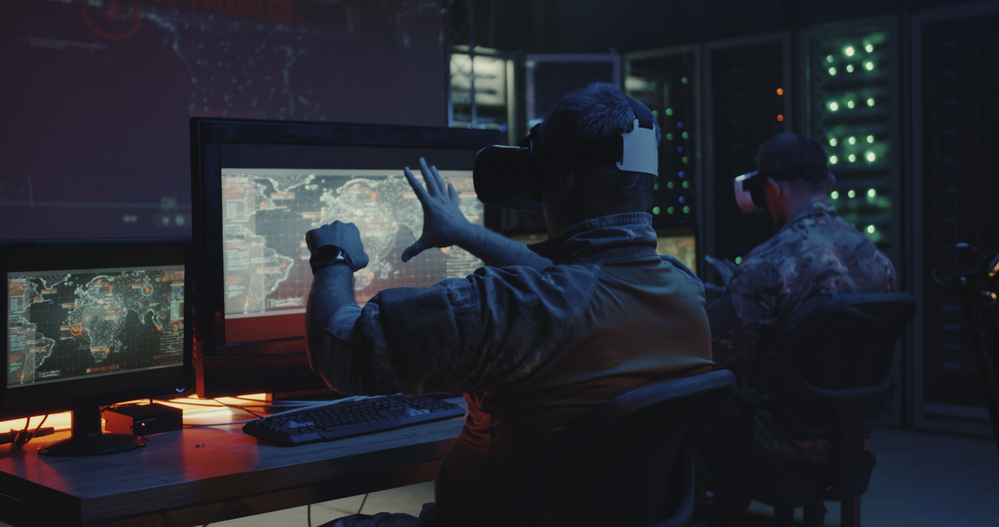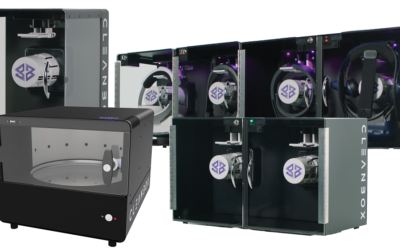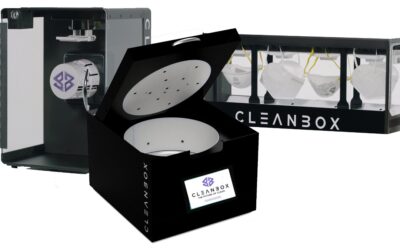In the last few years, the US Department of Defense has started using virtual reality simulations to train new service members. While this is a highly effective way of simulating conditions on the battlefield, sharing VR devices can be problematic due to the risk of infection. Instead of using traditional disinfection methods, purchasing a specialized VR lens cleaner is recommended. Unlike traditional wipes, a UV disinfection box can kill 99.999% of germs.
This isn’t the case with wipes due to the risk of human error and the fact that it isn’t easy to reach all angles of VR devices with a wet wipe. What’s more, traditional disinfection methods produce waste, and they are costly. By choosing a product like Cleanbox CX or OmniClean, organizations can keep their staff safe without putting pressure on the environment or the budget.
Are Outdated Disinfection Methods Putting Service Members at Risk?
There are several reasons why VR devices are being used by the military and the defense industry. Most commonly, the technology is included in training sessions since it can help service members visualize what they might encounter on the battlefield and test out various tactics. But while the technology is incredibly useful, it also poses risks. In most facilities, there aren’t enough VR devices for each person, so they have to be shared.
If the headsets aren’t disinfected properly, service members are put at risk of infection. This could weaken them or even put them out of action, defeating the purpose of the training. Traditional wipes and sprays are problematic for several reasons. They don’t provide enough protection against pathogens, they are expensive, and they tax the environment.
What Are the Problems with Traditional Wipes?
There’s no way of verifying whether wiping down equipment is effective enough. Many experts agree that pathogens are likely to remain on headsets when they are cleaned with wet wipes because there are hard-to-reach surfaces. What’s more, wiping can be time-consuming, and if the military training needs to be completed on schedule, people might not spend enough time wiping every angle of their devices before passing them on.
In addition to providing inferior protection, wipes are also taxing for the environment because they are disposable. When considering how large the US Department of Defense is, switching to a more modern, low-waste system could have a significant impact on the environment. It is also cheaper, since a disinfection box only needs to be purchased once and can then be used approximately 600,000 times.
Why Use a UV Disinfection Box for VR Devices?
Currently, a disinfection box using UV-C LED technology is the most effective way of cleaning electronic equipment that is shared between users. The tool is not only capable of killing 99.999% of pathogens, but it is also cheaper than using traditional wipes, and it eliminates the need for creating massive amounts of plastic waste that damage the environment.
Once an organization has purchased the disinfection box, they can use it for hundreds of thousands of cleaning cycles. Each one thoroughly disinfects the equipment, and there is no chance of an inferior result due to human error. The clean VR headsets can be retrieved after 60 seconds and passed on to the next service member, so there is no delay.
A Highly Effective VR Lens Cleaner
When using a UV disinfection box, service members can be sure that 99.999% of the pathogens are rendered inactive. This effectively eliminates the risk to people when they share VR headsets. All Cleanbox products use UVC LED light engineering, which is much more effective than the older UVC bulbs because it targets the areas in need of cleaning directly.
The process is similar to the way sunlight naturally disinfects outside surfaces. The UV-C light, which is the shortest on the UV spectrum, is germicidal, which means that it attacks both bacteria and viruses. When applied to headsets and other shared pieces of equipment, the light damages the DNA of harmful microorganisms and therefore disables their ability to reproduce. This stops the germs from infecting the next person wearing the headset.
No Waste
Aside from being an extremely effective disinfectant, the Cleanbox VR lens cleaner also has the potential to drastically reduce the amount of waste produced by the government and businesses. In the last two years, the Covid-19 pandemic has led to an exponential increase in single-use plastics such as wet wipes, disposable gloves, and bottles of sanitizer.
All in all, around eight million tons of pandemic-related plastic have been produced. With environmental concerns still growing, this is a significant problem. A disinfection box is an ideal solution because it is a single device that can be used for 600,000 cleaning cycles before it needs to be repaired or replaced. When considering how many wipes would be needed to clean VR devices 600,000 times, it is clear that the device is incredibly efficient.
Long-Lasting Product
The US Department of Defense doesn’t have unlimited resources, so every decision has to make sense financially. Buying a UV disinfection device eliminates the need for the ongoing purchase of more traditional disinfection tools. While the initial expense is greater, the cost of each round of cleaning is much lower.
What’s more, the health and well-being of service members have to be considered. If they are put at risk and, in some cases, out of action, they have to be replaced with new people. This is costly and time-consuming. By using a Cleanbox disinfection device, the military could reduce the risk of losing valuable service members during the training process.
No Human Error
When disinfecting surfaces with a spray or wipes, there is a lot of room for human error. People might not be fully focused on the task, or they might be in a rush because they are running late. As a result, the device won’t be cleaned optimally, and microorganisms are allowed to linger. This isn’t the case with a UV cleaning device.
After using the VR headset, service members or staff can simply place it inside the box and run the cycle, which takes 60 seconds. Once the cycle is complete, the VR device is fully disinfected. There’s no need to concentrate or spend several minutes making sure every surface is clean because the device does it all.
Which Cleanbox Product Is Best for VR Devices?
At Cleanbox, there are several UV boxes to choose from. While they are all highly effective, some are more suitable for cleaning VR headsets than others. For example, the CX Series was designed specifically to clean head-mounted displays. This box is available in several sizes, so multiple headsets can be cleaned at once.
Another option is the OmniClean, a box that uses over 30 UVC LEDs, a rotating quartz plate, and reflective surfaces to disinfect devices with many angles. Omni can disinfect any device that fits inside it, including headsets, mics, glasses, and headphones. It is therefore the ideal solution for organizations that need to clean various devices of different shapes and sizes.
Outdated disinfection methods, such as using wipes, can’t adequately clean the VR devices shared by service members during their training. Instead, an ultraviolet VR lens cleaner should be used. This device only takes 60 seconds, and it kills 99.999% of all pathogens, providing superior protection.





